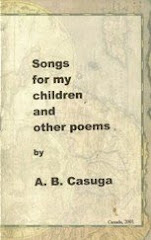 Four days ago, I wrote one of those rare love poems that I hazard to create with considerable trepidation. Not only are love poems difficult to write, but they also turn out to be risky business. “Love in a Butterfly Garden” is one of the only two love poems I have ever dared to write for my wife of almost half a century. Now I am revising it.
Four days ago, I wrote one of those rare love poems that I hazard to create with considerable trepidation. Not only are love poems difficult to write, but they also turn out to be risky business. “Love in a Butterfly Garden” is one of the only two love poems I have ever dared to write for my wife of almost half a century. Now I am revising it.Revising it? Why and what for?
Although rewrites and endless revisions are part of the artistic discipline, in this case, one risks being asked: What was wrong with it? Not enough sincerity in it? Was it for real? How about the raw feelings that spontaneously gave rise to the amorous and poetic utterance? How authentic were they? Did I mean it at all? The love element at least?
This late in life, I like to believe that would not be the trigger for the rewrite. It is, as it has always been, a case of the critical mind vetting the initial pristine utterance -- once upon time, this was the sacred core of the creative process. What initially issues from the depths of the balance of thought and emotion was THE creation. Frequently, out of artistic arrogance, the first draft is THE poem until a revisiting in the tranquility of post-creation would reveal possible sections that could come back to embarrass the poet because he could have done a better job with those essentials of style and technique.
What if revision resulted in the stultification of the original aesthetic experience? What if the strictures of style and technique would only obfuscate the fervour of the initial poetic utterance? Revision could certainly be a result of artistic dread. Nevertheless, it is always accepted as the artist’s exercise of creative prerogative – the art remains unfinished until the artist says he is done and is happy with it. His divine right, like it or not.
In this revision, however, I thought the first version’s long lines dulled the function of the internal rhymes, and obscured the subtlety of the feminine rhymes that control otherwise effusive outbursts of verbal effluence (maybe even of periphrastic effluvium). The shorter lines serendipitously objectify the shape of the papillons involved in the act of love and immolation, of birthing and dying. The sensory-impressionistic ideograph of the poem-on-the-page could suggest the butterflies, the flitting female bearing the pupa (in stanza 1.) and the supine male (resigned as victual; i.e., food for post maternity) in a force majeure ordaining its supreme sacrifice of becoming food for the short-lived birthing mariposa, all for the grand design of issuing another butterfly to go through the same process (stanza 2.) ad infinitum.
The tonal impressions from the preponderant sounds of b, p, f, ing, and alliterations shaped out of these phonemes suggest the process of flight and birthing, the reproductive ritual, and the eventual “pfffttting” of all that effort.
This being merely the beginning of a string of revisiting and hopefully not eviscerating revisions, I leave the reader to his preference. Did the revision do the poem any good? At this point, which do you prefer?
LOVE IN THE BUTTERFLY GARDEN: A POEM FOR V.
--- The female carries the male butterfly on her back while they reproduce, and then the female eats the male while waiting for the pupa to become another butterfly, and then she dies shortly after. --- Bohol Butterfly Farm Guide Felix.
1.
How a butterfly farm can turn
an upside down imitation of life,
haunts me still this side of art as life
or life as art as transfixed visions
of what we must be now:
like the gravid mariposa luring its mate
in a flight of duty -– she must bear
the male of her specie on her back
while they consummate a dance on air
not unlike our act of mating ---
she enamouring her mate
with scents purloined from blossoms
as, conjoined, they flit from flower to leaf
tumbling on air in ecstasy
not unknown to us when wild and young
and brave with joie de vivre,
for they must breed their kind
in a chrysalis of quiescence hurriedly,
urgently, before an inexorable end
where the male must be consumed
as her victual while clinging
to bramble branches bearing her pupa
seen to us now, voyeurs of unfolding
beauty and arresting splendour,
as the preening papillon bestirring
the dry air into a flutter of magic
sprung from throes of death and dying,
for she, too, must soon perish
after this function of issuing
a magnificence that for us can only be
borne of love and loving, yes,
perhaps also onto death and dying.
2.
The poet’s refrain, “how do I love thee”,
is supercilious here, cher ami,
it cannot match the male butterfly’s sacrifice,
nor this mariposa’s dying
to bear life, beauty, and splendour.
Alas, beauty is an omen here.
--- ALBERT B. CASUGA
(Revised August 28, 2009)













